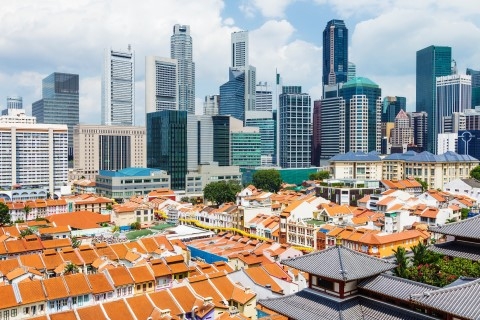
Singapore's home price growth slows in Q2
Private residential prices have tapered off from 3.9% in Q1 to 3.4.% in Q2.
Singapore’s red-hot property market appears to be starting to show signs of cooling down as the growth of island-wide private residential prices moderated slightly from 3.9% in Q1 to 3.4% in Q2 even as the index continued its steady uptrend for the fourth consecutive quarter, according to the URA’s price index.
Also read: Over 2,000 condo units sold in H1 cost less than $2m
For condominiums and private apartments, Savills observed that overall prices also grew at a slower pace on a quarter-on-quarter basis after rising by 3.2% in Q2 from 4.4% in Q1 with per segment rise CCR, RCR and OCR at 0.9%, 5.6% and 3.0% QoQ respectively.
A similar pattern can also be observed in the prices of high-end non-landed residential properties with the quarterly price increase slowing from Q1’s 2.7% to Q2’s 1.0%.
The average price of these high-end units clocked in at $2,400 psf which is 1.2% less than the peak selling price of $2,429 per sq ft in Q1/2013.
This comes as the market increasingly waits out the impact the cooling measures in the near term but this is not likely to result in a significant home price decline.
Also read: Property curbs may compel developers to reprice projects
“Our central view is that steep price increases in the near term will be deferred. Owing to the high land prices paid by developers for recent GLS sites and en-bloc sale sites, launch prices of some future developments may still set benchmarks in the vicinity but lower than what they had expected,” the firm said in a report.
The prices of upcoming launches for the second half of 2018 are re-vectored to end-2019, thereby slowing the price increase for 2018 from 15-20% to 10-12%, added Savills.
On the other hand, home supply is on the rise as the number of unsold private residential units have also increased substantially in Q2. There are 26,691 uncompleted private homes in the pipeline which remains unsold - a figure 11.4% higher than headline figures in Q1.
On top of that, there is a potential supply of 19,500 units (including ECs) from both Government Land Sales (GLS) sites (around 8,400 units) and awarded en-bloc sale sites (11,100) that have not been granted planning approval yet.
























 Advertise
Advertise






